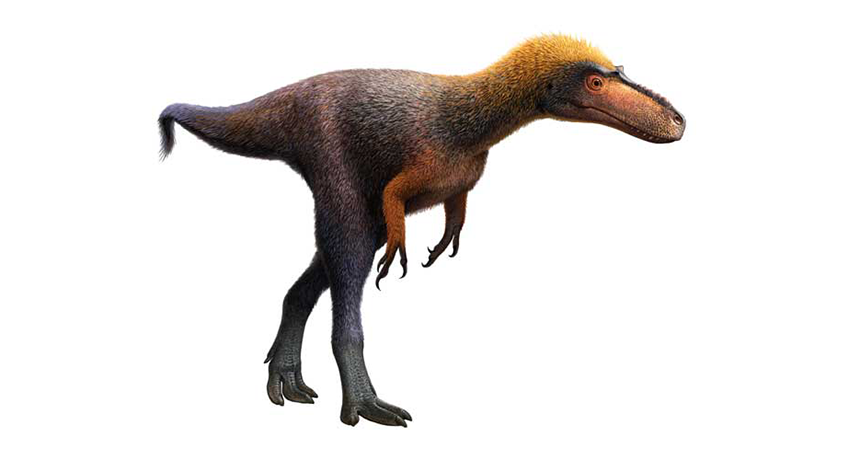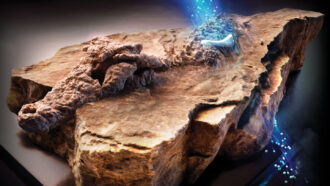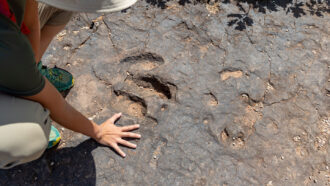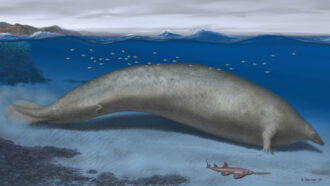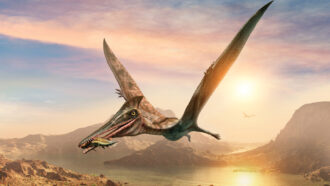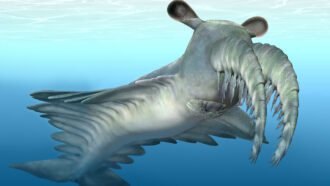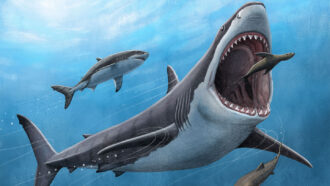colleague Someone who works with another; a co-worker or team member.
dinosaur A term that means terrible lizard. These ancient reptiles lived from about 250 million years ago to roughly 65 million years ago. All descended from egg-laying reptiles known as archosaurs.
ecology A branch of biology that deals with the relations of organisms to one another and to their physical surroundings. A scientist who works in this field is called an ecologist.
engineering The field of research that uses math and science to solve practical problems.
evolution (v. to evolve) A process by which species undergo changes over time, usually through genetic variation and natural selection. These changes usually result in a new type of organism better suited for its environment than the earlier type. The newer type is not necessarily more “advanced,” just better adapted to the particular conditions in which it developed.
family A taxonomic group consisting of at least one genus of organisms.
fossil Any preserved remains or traces of ancient life. There are many different types of fossils: The bones and other body parts of dinosaurs are called “body fossils.” Things like footprints are called “trace fossils.” Even specimens of dinosaur poop are fossils. The process of forming fossils is called fossilization.
kin Family or relatives (sometimes even distant ones).
lizard A type of reptile that typically walks on four legs, has a scaly body and a long tapering tail. Unlike most reptiles, lizards also typically have movable eyelids. Examples of lizards include the tuatara, chameleons, Komodo dragon, and Gila monster.
paleontologist A scientist who specializes in studying fossils, the remains of ancient organisms.
prey (n.) Animal species eaten by others. (v.) To attack and eat another species.
skull The skeleton of a person’s or animal’s head.
species A group of similar organisms capable of producing offspring that can survive and reproduce.
trait A characteristic feature of something. (in genetics) A quality or characteristic that can be inherited.
tyrannosaur A line of meat-eating dinosaurs that began during the late Jurassic Period, about 150 million years ago. These species persisted into the late Cretaceous Period, about 65 million years ago. The best known member of these species: the late Cretaceous’ Tyrannosaurus rex, a 12-meter (40 foot) long top predator of its time.
Tyrannosaurus rex A top-predator dinosaur that roamed Earth during the late Cretaceous period. Adults could be 12 meters (40 feet) long.
Velociraptor A genus of predatory bird-like dinosaurs with a relatively large brain and a long, sharp claw on each foot. Its fossils were first discovered in the 1920s in what is now Mongolia. The roughly meter-tall animal moved on two feet and slashed at prey with one of its sharp talons. It would not have been as daunting as its namesake portrayed in the Jurassic Park movie franchise. Many scientists believe that movie version was actually Deinonychus, a dinosaur twice its size and known from fossils unearthed in the United States during the 1960s.
